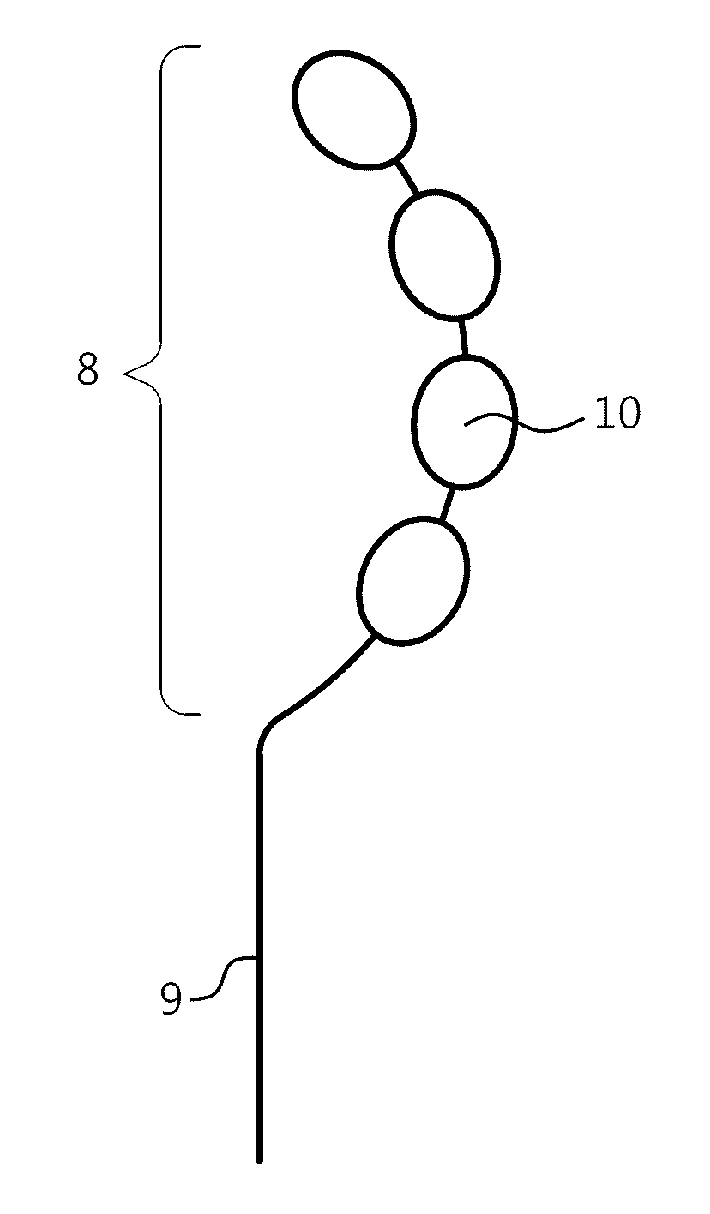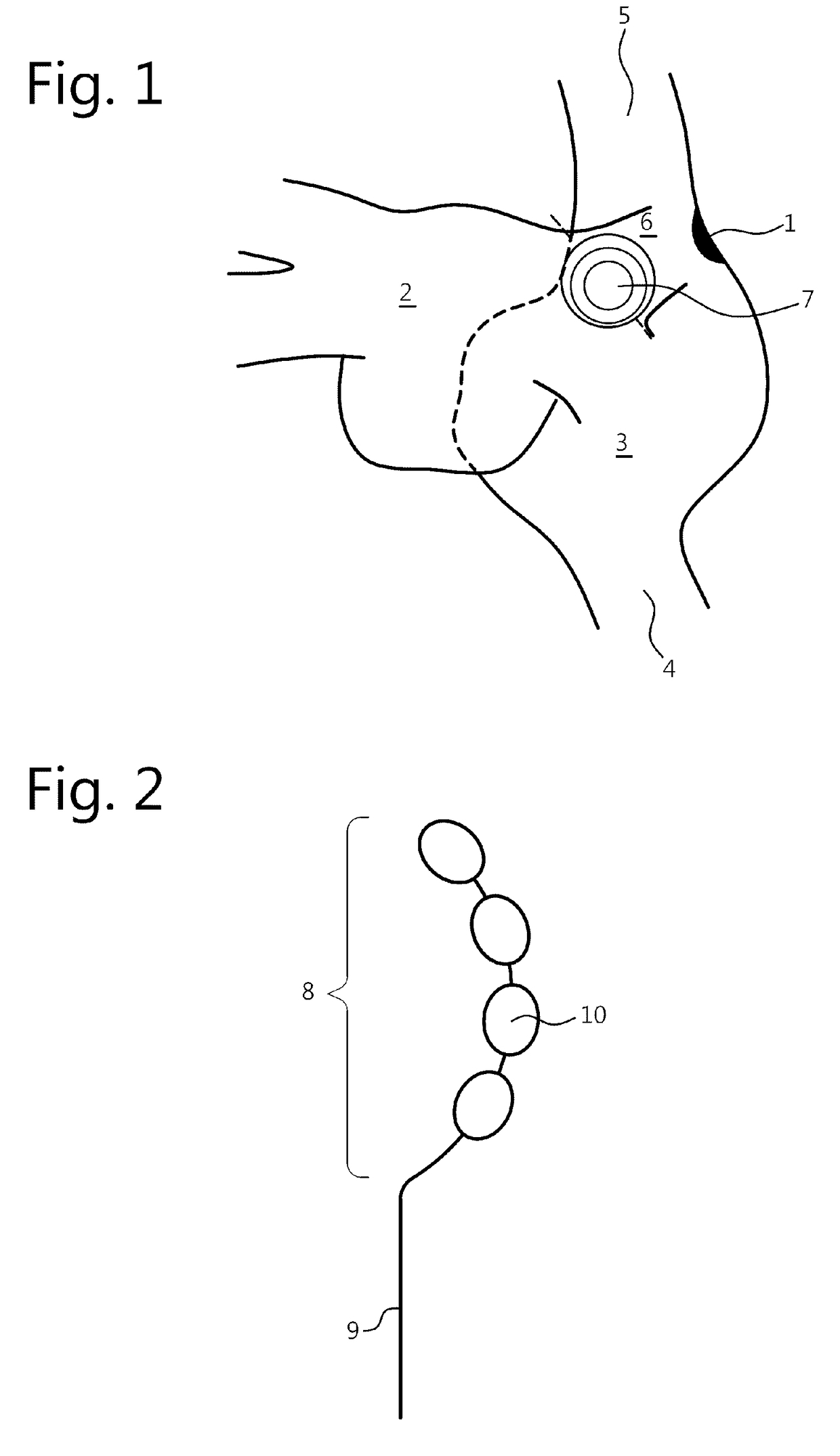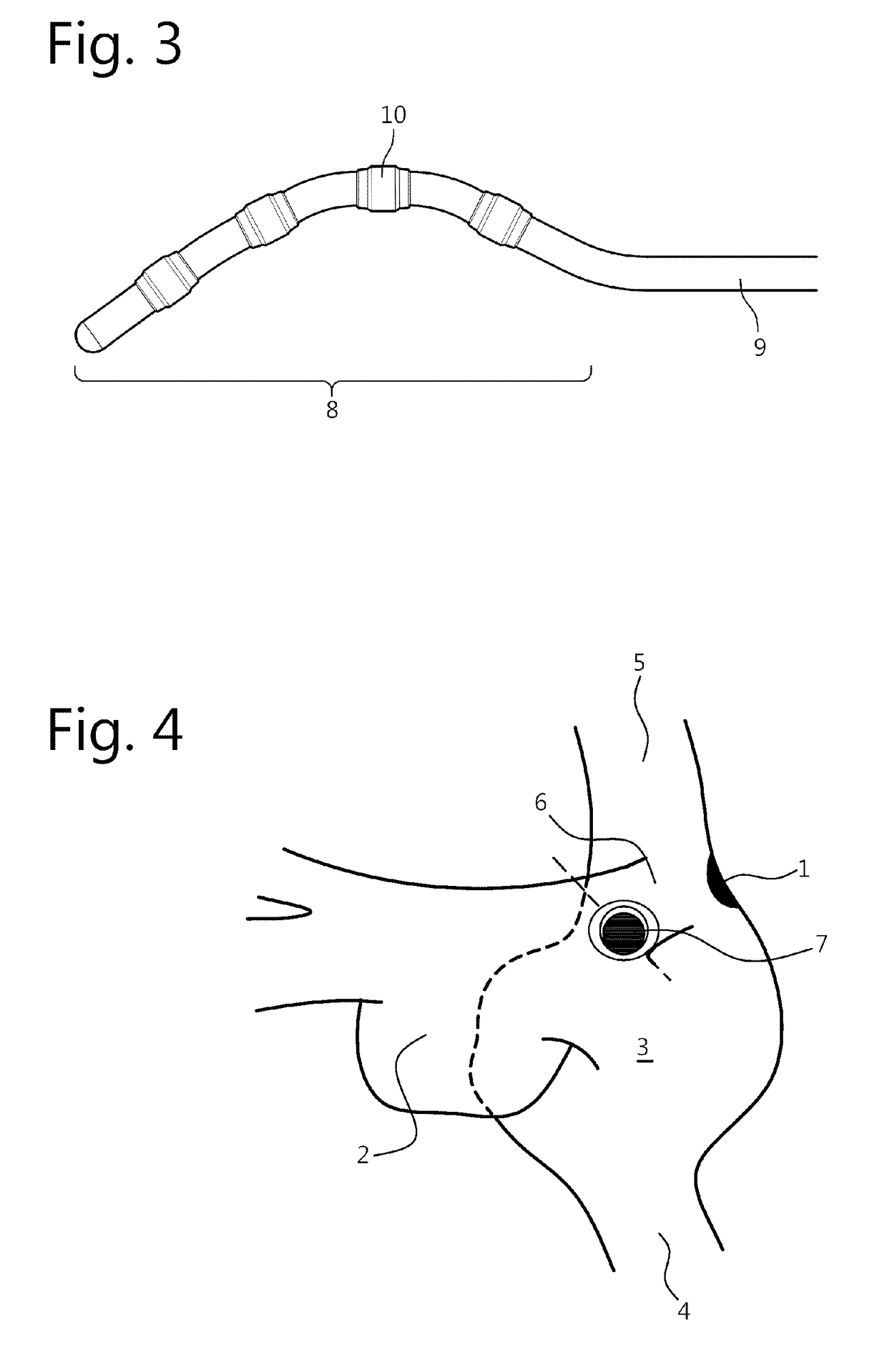Limited ablation for the treatment of sick sinus syndrome and other inappropriate sinus bradycardias
a limited ablation and bradycardia technology, applied in the field of organs, can solve the problems of inability to exercise, inability to fully recover, etc., and achieve the effects of reducing the risk of pericarditis
- Summary
- Abstract
- Description
- Claims
- Application Information
AI Technical Summary
Benefits of technology
Problems solved by technology
Method used
Image
Examples
example 1
[0114]P-P interval (PPI) shortening as a function of time (t) during two applications of radiofrequency ablation at the specific limited location 7, according to embodiments of the present invention, is shown in FIG. 7. Each application of radiofrequency ablation (RFA) is executed for 60 seconds. Due to the first application of RFA the P-P interval drops from A to B. After the first application of RFA, the P-P interval increases again to level C. As a results of the second application of RFA, the P-P interval drops from C to D. Afterwards, the P-P interval rises again to level E, which was below the P-P level targeted for the ablation treatment.
[0115]FIG. 8 is a graph showing the residual amount of the P-P interval value retained during follow up after ablation treatment at the specific limited location 7 according to an embodiment of the present invention. The results correspond to P-P interval values of a patient which was treated at the specific limited location 7 by a left atria...
example 2
[0117]FIG. 9 is a graph showing the residual amount of the P-P interval value during follow up after ablation treatment at a specific limited location 7 according to an embodiment of the present invention. The ablation treatment was performed by a right atrial approach. The results are shown as a ratio of the P-P interval remained during follow up (P-P interval(f)) relative to the P-P interval prior to ablation (P-P interval(i)). Six patients (P1 to P6) were monitored and the follow up was performed during multiple months. The P-P intervals were measured using a regular ECG registration device. Generally, the P-P interval shortened during follow up. The hearts indicate a higher vagal tonus during the ECG registration in two patients at a particular moment of follow up.
example 3
[0118]FIG. 10 is a schematical representation of an algorithm for ablation according to embodiments of the present invention.
[0119]Based on the concept of ablation on the specific limited location 7 according to the method of the present invention, on the targeted location 7, on biophysical available knowledge and on unpolished in vivo data of time-P-P interval curves during ablation, an algorithm is proposed to identify the preferred initial ablation site, to define ablation parameters, to define active ablation electrodes, to define the moment and the location of catheter repositioning, to define the amount of ablation lesions and to define the procedural endpoints.
[0120]Several parameters are of importance and are discussed in the following section:
1. Maximal Heart Rate (HR) Reached During a Pharmacological Screening Test:
[0121]A value must be encoded in the system. The minimal value of the P-P interval observed during this test gives an indication of the potential value of this ...
PUM
 Login to View More
Login to View More Abstract
Description
Claims
Application Information
 Login to View More
Login to View More - R&D
- Intellectual Property
- Life Sciences
- Materials
- Tech Scout
- Unparalleled Data Quality
- Higher Quality Content
- 60% Fewer Hallucinations
Browse by: Latest US Patents, China's latest patents, Technical Efficacy Thesaurus, Application Domain, Technology Topic, Popular Technical Reports.
© 2025 PatSnap. All rights reserved.Legal|Privacy policy|Modern Slavery Act Transparency Statement|Sitemap|About US| Contact US: help@patsnap.com



